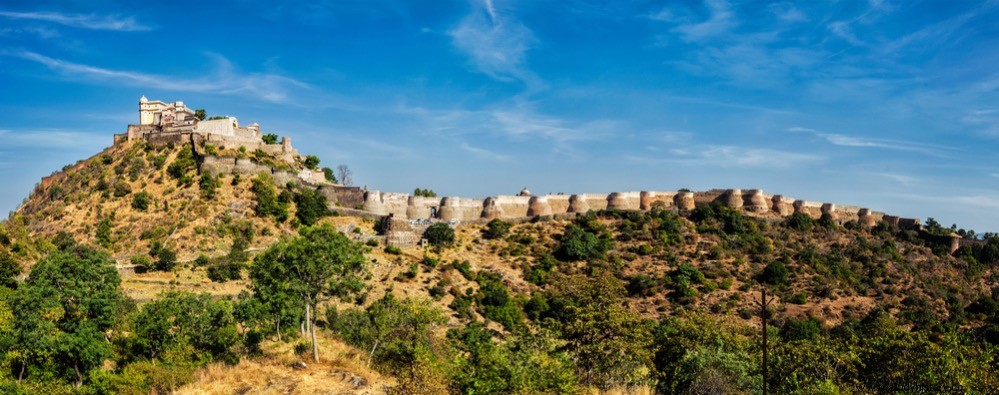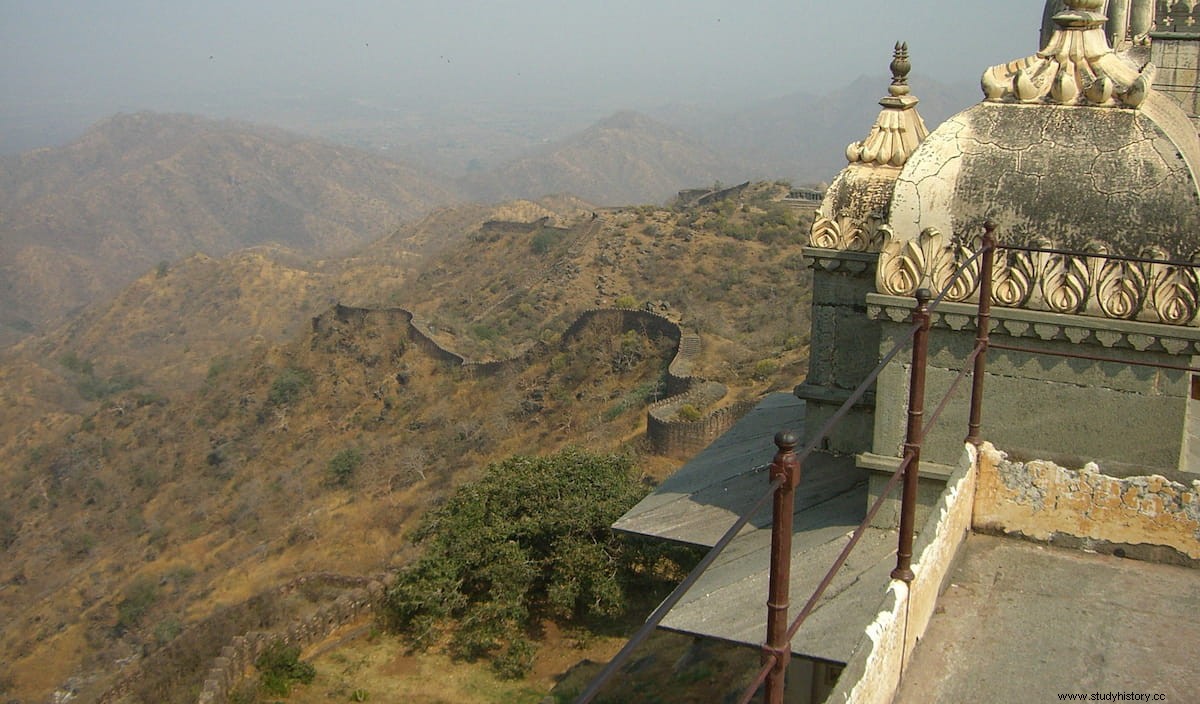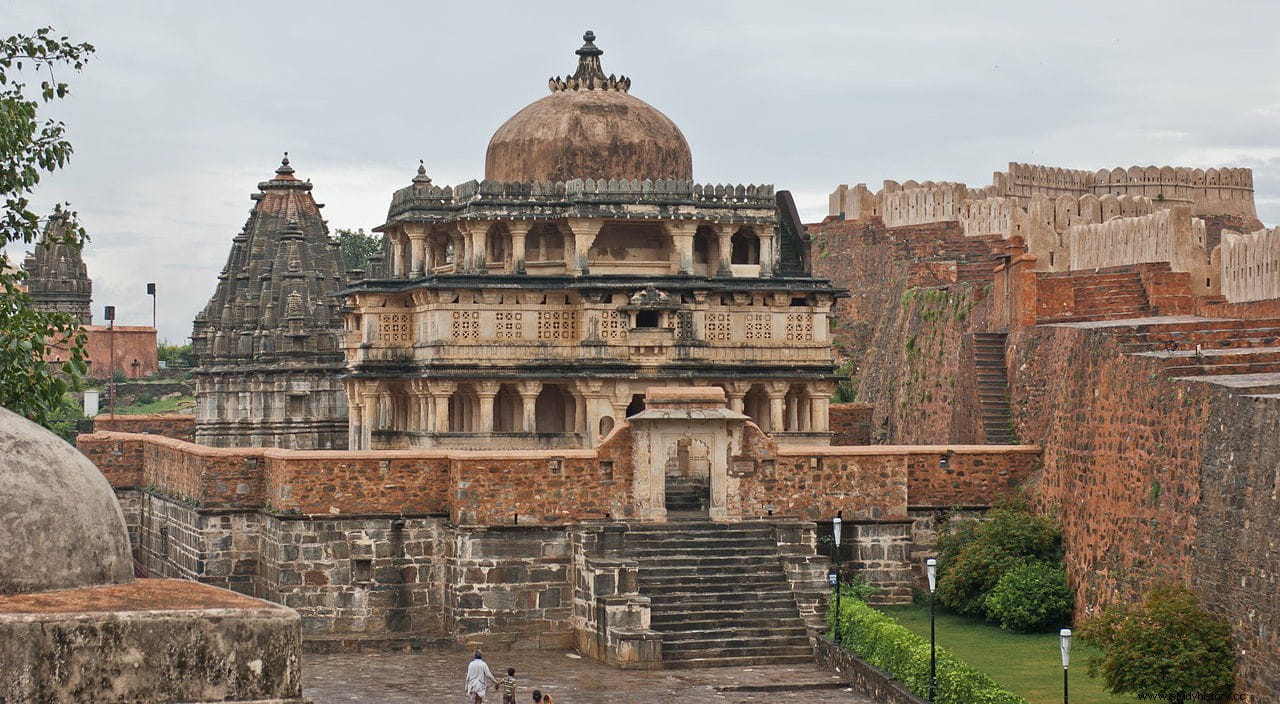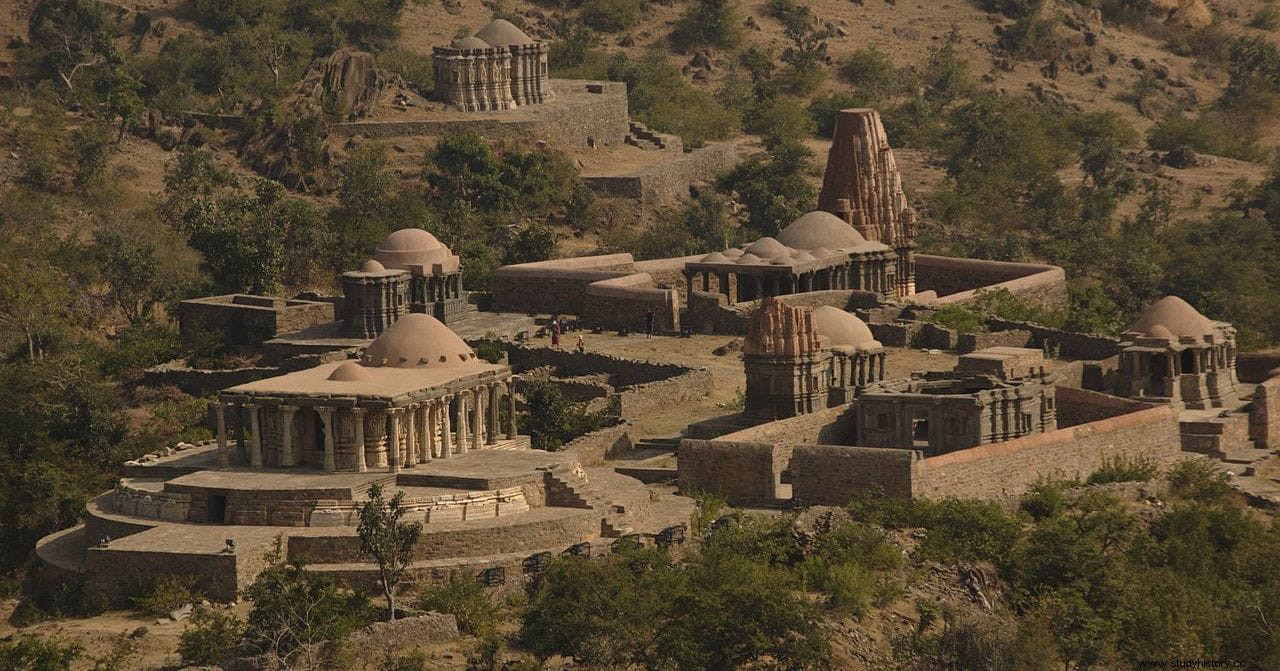Unquestionably the largest wall in the world is the famous Great Wall of China. In Europe there is another very similar, although considerably smaller, the Wall of Ragusa. And among those that no longer exist are the Walls of Benin, in Africa, which were once the longest structure built by Man.
India also has its own example, which is also considered the second largest wall in the world, after China. It is the Kumbahalgarh Fort, whose perimeter walls stretch for 36 kilometers winding through forested hills, and are wide enough to allow the passage of eight horses in parallel .

It is located in the Aravalli mountains, in the state of Rajasthan, in the west of the country. Construction began in 1458 on the remains of an earlier fortress of unknown antiquity, under the reign of Mewar ruler Rana Kumbha. This would be responsible for the construction of at least 32 of the 84 forts that defended Mewar. It took him almost a century to finish the perimeter walls, which were later enlarged in the 19th century.

It is located on a hill at an altitude of 1,100 meters and is the highest in Rajasthan, with seven large fortified gates and up to 364 temples within the walls (which are more than 4 meters thick at the front), 300 of which are Jains and the rest Hindus. The complex, a true city, is also home to palaces and huge reservoirs and water cisterns.

The Lakhola cistern is the largest of all, with dimensions of 5 kilometers long by 200 meters wide and 12 meters deep. On the bases of the idols located at the Hanuman Pol gate there are inscriptions that give details of the construction of the fort.
The fort remained impenetrable throughout its history surrounded by enemies such as the Muslim sultans, who assaulted it many times. Except on one occasion, when it was taken by Mughal emperor Akbar's army in 1576 after a prolonged siege that left the place without a supply of drinking water.

Local legends say that the walls were so illuminated with lamps and torches that at night the peasants could work in the vast interior lands just as if it were daytime.
The fortress was in use until the end of the 19th century, and today it is part of the World Heritage Site. It can be visited and is especially attractive at sunset, when it lights up spectacularly for a few minutes.

Of course, the authorities warn that, although most have been deactivated, in the most remote places there may still be traps and hidden defense mechanisms, with the consequent danger for visitors.
